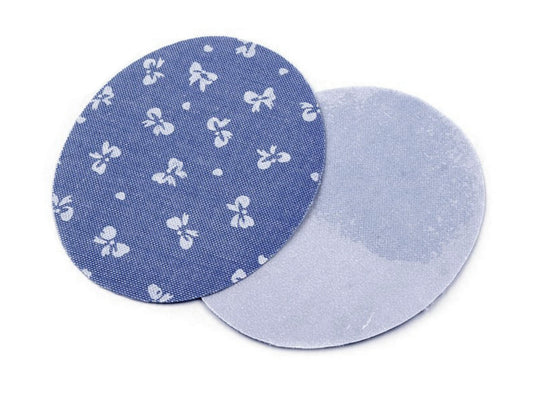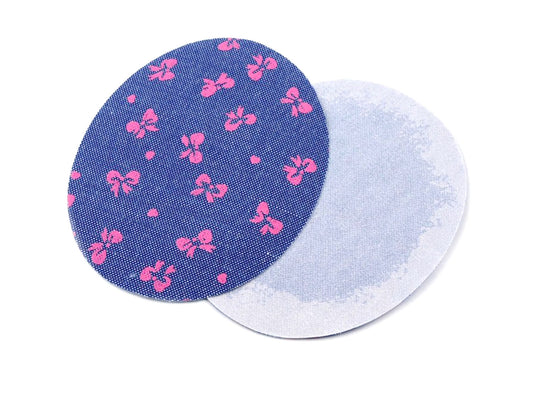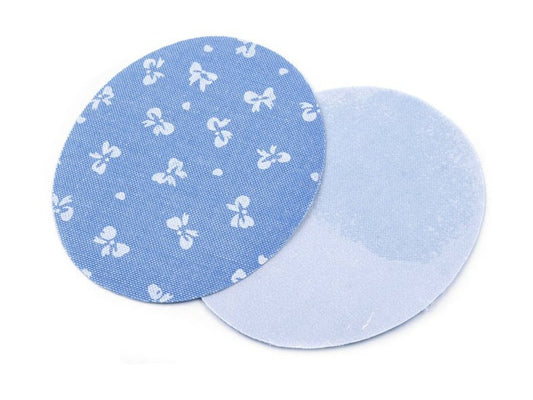-
Prym - 1 patch fabric - cotton 12 x 45 cm - red
Regular price €3,90 EURRegular price -
Prym - 1 patch fabric - cotton 12 x 45 cm - medium blue
Regular price €3,90 EURRegular price -
Prym - 1 patch fabric - cotton 12 x 45 cm - navy
Regular price €3,90 EURRegular price -
Prym - 1 patch fabric - cotton 12 x 45 cm - dark green
Regular price €3,90 EURRegular price -
Prym - 1 patch fabric - cotton 12 x 45 cm - beige
Regular price €3,90 EURRegular price -
Prym - 1 patch fabric - cotton 12 x 45 cm - grey
Regular price €3,90 EURRegular price -
Prym - 1 patch fabric - cotton 12 x 45 cm - anthracite
Regular price €3,90 EURRegular price -
Prym - 1 patch fabric - cotton 12 x 45 cm - black
Regular price €3,90 EURRegular price -
Reflective fabric for ADHESIVE use - 10 x 20 cm
Regular price €4,30 EURRegular price -
Thin cotton patch, boil-proof - 10 x 20 cm - brown
Regular price €2,00 EURRegular price -
Thin cotton patch, boil-proof - 10 x 20 cm - royal blue
Regular price €2,00 EURRegular price -
Denim patches, to iron on - Flick & Go - medium blue
Regular price €3,50 EURRegular price -
Denim patches, to iron on - Flick & Go - light blue
Regular price €3,50 EURRegular price -
Jeans patches with bows - blue
Regular price €1,00 EURRegular price€1,60 EURSale price €1,00 EURSale -
Jeans patches with bows - blue, pink
Regular price €1,00 EURRegular price€1,60 EURSale price €1,00 EURSale -
Jeans patches with bows - light blue
Regular price €1,00 EURRegular price€1,60 EURSale price €1,00 EURSale
Collection: patches
Patching Knowledge
What is a patch and what is it used for?
A patch is used to enhance or repair a damaged textile item, such as a garment, accessory, or piece of furniture. Instead of removing and replacing the damaged section, the patch is applied to the damaged area. This covers small or large holes, restores functionality, and prevents further damage. Patches are usually made of the same color and pattern. However, there are also colorful patches with striking patterns that can serve as an accent and a real eye-catcher. Patches are suitable for both children and adults, as everything from bright and bold to simple and subtle is possible. Patches thus make a significant contribution to sustainability, as they can easily extend the lifespan of clothing or other textile items.
Iron-on or sew-on patches are especially popular and in high demand. These are particularly stressed areas of clothing that often benefit from extra reinforcement. Applying iron-on patches is incredibly easy. Simply iron them on, and the garment is mended and repaired. For even greater security, they can also be sewn on, especially around sleeves and knees.
What types of patches and repair patches are available?
From thin cotton patches and sturdy twill fabric to reflective material and denim patches, a wide variety of materials are available for mending, patching, and upgrading. You'll find a range of materials, sizes, shapes, and colors to choose from.
The patches are mostly oval, approximately 9.5 cm by 11.5 cm, and rectangular, approximately 9.5 cm by 11.7 cm. They are generally sufficient to cover all damage and create attractive accents.
Most patches, such as jeans patches, are reinforced, making them particularly robust, tear-resistant and durable.
A good tip is to buy the value packs. These contain four patches: two oval and two rectangular with rounded corners.
How are patches and repair patches applied?
First, the correct patch in the correct size must be chosen for the damaged area. Patches come in various shapes and materials. Once the right patch is found, it must be positioned and aligned correctly. For iron-on patches, the pattern or design is covered with a cloth, and the patch is then pressed firmly onto the fabric for approximately 60 seconds, or ironed on at a temperature of up to 200°C. Afterward, the patch should be ironed again from the inside to ensure proper adhesion. For very fine and delicate fabrics that cannot withstand high heat, these patches should ideally be sewn on.
What should be considered when caring for patches and rags?
What care instructions should be followed for patches?
The patches are washable at 40°C on a gentle cycle. Please observe the care instructions for the backing material. Tumble drying is generally possible on a gentle setting. Patches can usually be ironed normally. However, please consider the properties of the backing fabric.
Discover Prym sewing accessories now!















